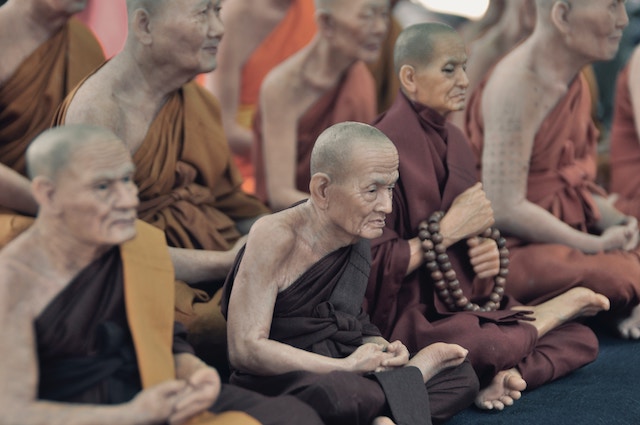I am a minister of mindfulness, a yoga evangelist, a preacher of peace, and a teacher of kindness.
Yoga and meditation (which are, ultimately, one and the same) have given my life its contour and texture.
Since learning Hatha yoga as an adolescent 25 years ago, I have explored a plethora of methods and techniques. I have revered too many teachers to name, yet I’ve never followed one particular guru or lineage. I have often wondered when my teacher would appear and ruminated upon which was the right path for me amidst the seemingly infinite options from which to choose.
I have delved into the Dharma, studied Zen and Tibetan Buddhism, explored Vipassana, Ayurveda, and Mayan astrology. I’ve learned and written lots about the chakras, the basics of meditation, Yin yoga, and more. I’ve practiced Bhakti yoga, Karma yoga, Hatha, Ashtanga, Kundalini, and so on.
At this point, I would say that my primary path is Dharma yoga, or the intertwining of yoga asana, pranayama, and Tibetan Buddhist meditation techniques and teachings.
But this is all beside the point. The point is the practice. Simply practicing is the point.
Here are the four stages I’ve defined as phases many spiritual practitioners pass through as we stroll, saunter, and stumble along the path. May they be of benefit!
Stage 1: Beginner’s Mind.
“What we call ‘I’ is just a swinging door, which moves when we inhale and when we exhale.” ~ Shunryū Suzuki Roshi
Learn what’s worth preaching. Try out different methods and modalities. Find the ones that resonate most with you. Learn and study them. Be willing to be a beginner and start anew each morning.
Stage 2: On The Path.
“No person is free who is not master of himself.” ~ Epictetus
Actually practice, with discipline, every day. Formal practice is essential. Formal practice can take different shapes and forms. It may mean sitting or standing still in silent meditation. It may mean chanting sacred mantras. It may mean breathing and moving into different postures.
It’s helpful to practice in the same physical location and at the same time each day. In this way, we develop the habit of prioritizing our practice. There are endless distractions from dirty dishes to work obligations to all the shiny things on the internet.
For me, it’s important to practice first thing in the morning, ideally before my daughter wakes up, so that I can make sure it happens. Sometimes, it’s 10 minutes; sometimes, it’s half an hour. Then, if I can practice again later in the afternoon or evening, that’s a bonus.
Stage 3: Living Your Dharma.
“The purpose of human life is to serve, and to show compassion and the will to help others.” ~ Albert Schweitzer
Stop preaching and just model your practice through your being. Walk the talk. Then stop talking and just walk. The people around you—friends, acquaintances, even strangers—will pick up much more from your way of being than any stated philosophy.
Stage 4: Illumination.
“Your life is your practice. Your spiritual practice does not occur someplace other than in your life right now, and your life is nowhere other than where you are. You are looking for answers, insight, and wisdom that you already possess. Live the life in front of you, be the life you are, and see what you find out for yourself.” ~ Karen Maezen Miller
There will be a moment when the yoga melds with the stream of moment-to-moment experience of existence. The boundary between formal and informal practice dissolves. Life is practice; practice is life. What is, is.
Here’s to epiphanies, revelations, and the expansion of consciousness—all enabled through the continuous practice of pure awareness.
~
Author: Michelle Margaret Fajkus
Image: Iván Tejero/Unsplash
Editor: Leah Sugerman
Copy Editor: Danielle Beutell
Social Editor: Yoli Ramazzina







Read 1 comment and reply